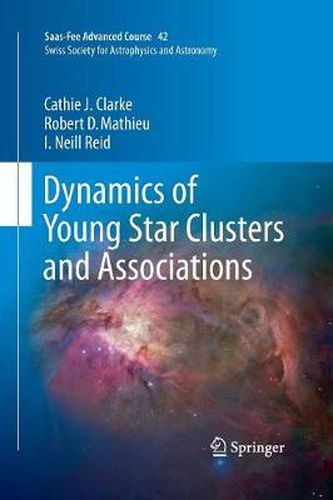Readings Newsletter
Become a Readings Member to make your shopping experience even easier.
Sign in or sign up for free!
You’re not far away from qualifying for FREE standard shipping within Australia
You’ve qualified for FREE standard shipping within Australia
The cart is loading…






This title is printed to order. This book may have been self-published. If so, we cannot guarantee the quality of the content. In the main most books will have gone through the editing process however some may not. We therefore suggest that you be aware of this before ordering this book. If in doubt check either the author or publisher’s details as we are unable to accept any returns unless they are faulty. Please contact us if you have any questions.
Where do most stars (and the planetary systems that surround them) in the Milky Way form? What determines whether a young star cluster remains bound (such as an open or globular cluster), or disperses to join the field stars in the disc of the Galaxy? These questions not only impact understanding of the origins of stars and planetary systems like our own (and the potential for life to emerge that they represent), but also galaxy formation and evolution, and ultimately the story of star formation over cosmic time in the Universe.
This volume will help readers understand our current views concerning the answers to these questions as well as frame new questions that will be answered by the European Space Agency’s Gaia satellite that was launched in late 2013. The book contains the elaborated notes of lectures given at the 42nd Saas-Fee Advanced Course Dynamics of Young Star Clusters & Associations by Cathie Clarke (University of Cambridge) who presents the theory of star formation and dynamical evolution of stellar systems, Robert Mathieu (University of Wisconsin) who discusses the kinematics of star clusters and associations, and I. Neill Reid (S
pace Telescope Science Institute) who provides an overview of the stellar populations in the Milky Way and speculates on from whence came the Sun. As part of the Saas-Fee Advanced Course Series, the book offers an in-depth introduction to the field serving as a starting point for Ph.D. research and as a reference work for professional astrophysicists.
$9.00 standard shipping within Australia
FREE standard shipping within Australia for orders over $100.00
Express & International shipping calculated at checkout
This title is printed to order. This book may have been self-published. If so, we cannot guarantee the quality of the content. In the main most books will have gone through the editing process however some may not. We therefore suggest that you be aware of this before ordering this book. If in doubt check either the author or publisher’s details as we are unable to accept any returns unless they are faulty. Please contact us if you have any questions.
Where do most stars (and the planetary systems that surround them) in the Milky Way form? What determines whether a young star cluster remains bound (such as an open or globular cluster), or disperses to join the field stars in the disc of the Galaxy? These questions not only impact understanding of the origins of stars and planetary systems like our own (and the potential for life to emerge that they represent), but also galaxy formation and evolution, and ultimately the story of star formation over cosmic time in the Universe.
This volume will help readers understand our current views concerning the answers to these questions as well as frame new questions that will be answered by the European Space Agency’s Gaia satellite that was launched in late 2013. The book contains the elaborated notes of lectures given at the 42nd Saas-Fee Advanced Course Dynamics of Young Star Clusters & Associations by Cathie Clarke (University of Cambridge) who presents the theory of star formation and dynamical evolution of stellar systems, Robert Mathieu (University of Wisconsin) who discusses the kinematics of star clusters and associations, and I. Neill Reid (S
pace Telescope Science Institute) who provides an overview of the stellar populations in the Milky Way and speculates on from whence came the Sun. As part of the Saas-Fee Advanced Course Series, the book offers an in-depth introduction to the field serving as a starting point for Ph.D. research and as a reference work for professional astrophysicists.